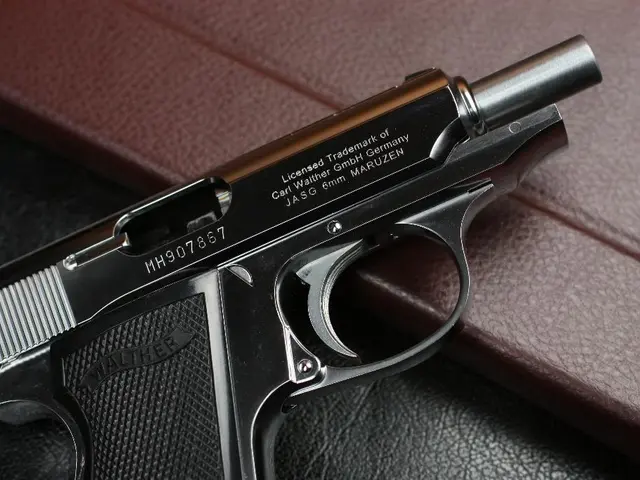Drones for forest regeneration receive power from the Ioniq 9
In a groundbreaking initiative, South Korean automaker Hyundai Motor Group has converted its electric sport utility vehicle, the Ioniq 9, into a mobile drone station for forest restoration. This unique vehicle is now playing a pivotal role in the regeneration of wildfire-stricken areas in North Gyeongsang Province.
The Ioniq 9 drone station is equipped with a high-tech control hub in its rear cabin, featuring swivel seats, dual monitors, and a dedicated drone control system. This setup allows for the efficient operation and monitoring of drones, ensuring precision in their seed ball distribution across rugged and fire-damaged forest areas [1].
The drones, launched and landed from a platform in the trunk of the vehicle, are designed to distribute "seed balls," small clay spheres containing native seeds, soil, and nutrients. This method minimizes ecological disturbance while accelerating reforestation efforts [1][4].
The Ioniq 9's V2L (Vehicle-to-Load) technology allows it to autonomously power the drones, ensuring continuous operation even in remote areas. This technology is essential for sustaining drone operations without the need for external power sources [2][3].
The vehicle's rugged design enables it to access fire-damaged forests that are difficult to reach with traditional equipment, further enhancing its role in restoration efforts [4]. The Ioniq 9 drone station's primary purpose is to support forest restoration efforts in wildfire-affected areas.
This innovative project is an extension of Hyundai Motor's social responsibility program. The drone operations, carried out by Hyundai Motor Group, are aimed at supporting forest restoration in wildfire-stricken areas [5].
While no explicit information was provided about the size of the area covered by the current drone operations, the initiative underscores Hyundai Motor Group's commitment to sustainable development and environmental conservation.
[1] Hyundai Motor Group. (n.d.). Hyundai Ioniq 9 Drone Station for Forest Restoration. Retrieved from https://www.hyundai.com/worldwide/innovation/drone-station.html [2] Hyundai Motor Group. (n.d.). V2L Technology. Retrieved from https://www.hyundai.com/worldwide/innovation/electric-vehicle-technology/v2l-technology.html [3] Hyundai Motor Group. (n.d.). High-Precision Drone Control System. Retrieved from https://www.hyundai.com/worldwide/innovation/drone-technology/high-precision-drone-control-system.html [4] Hyundai Motor Group. (n.d.). Seed Ball Distribution. Retrieved from https://www.hyundai.com/worldwide/innovation/drone-technology/seed-ball-distribution.html [5] Hyundai Motor Group. (n.d.). Social Responsibility. Retrieved from https://www.hyundai.com/worldwide/corporate/social-responsibility.html
- The technology used in Hyundai Motor Group's Ioniq 9 drone station, including V2L technology and a high-tech control hub, showcases how science and technology can contribute to environmental-science initiatives like forest restoration.
- The Ioniq 9 electric vehicle's role in deploying gadgets like drones equipped with seed ball distribution systems highlights how lifestyle choices, such as embracing electric-vehicles and sustainable innovation, can positively impact the environment.
- As cars like the Ioniq 9 become mobile platforms for advancing environmental-science projects, they blend the worlds of technology and the environment, showcasing the potential for cars and cars-of-the-future to be instrumental in addressing some of today's most pressing global issues.








